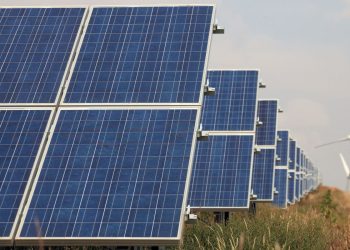The 2027 Chevrolet Bolt is back after a two-year hiatus, with a familiarly affordable price and better specs than ever. What’s great for EV buyers (maybe not so much for General Motors) is that Nissan had much of the same idea. The 2026 Leaf is back in force for the third generation of the faithful electric vehicle.
Both models are America’s cheapest new electric vehicles, with a starting price of around $30,000. That’s at least $3,000 less than the next most affordable electric vehicle, the Chevrolet Equinox EV.
So we thought we’d take a look at the spec sheets for the new Chevrolet Bolt and Nissan Leaf, to help potential buyers make a decision before the models arrive in the showroom.
Pricing and availability
The 2027 Bolt will launch at $29,990, including fees, in early 2026. A base LT model will arrive in dealerships a few months later, at $28,995.
The 2026 Leaf is a close game. The Leaf S+, which is the current base trim until details of the S are announced, starts at $31,485. The Leaf is now available at dealerships across the country.
The Leaf will, however, benefit from an even more affordable version, the S, which will have a smaller battery and shorter range. When he debuts, he will likely undercut the base Bolt. But in the meantime, GM’s new electric vehicle is currently the cheapest battery-powered car in America.
Overall design
There’s a table at the end of this article that sums it all up, but before we get there, let’s talk about the features and how both cars came to be. Right off the bat, it’s clear that Nissan put a lot more effort into redesigning the third-generation Leaf. This is a car built from the ground up on an entirely new platform, and it all leads to greater range, more power, faster charging, and a bit more attractive bodywork.
As for the new Bolt, you’d be hard-pressed to tell it apart from the old Bolt EUV that was discontinued at the end of 2023. Most of the body panels are the same as before, but to its credit, General Motors has made substantial improvements under the skin. There is a new battery that allows for much faster charging than before, a more powerful electric motor and a revised interior.
Charging and energy
Both electric vehicles leave the factory with a Tesla-style NACS (North American Charging Standard) charging port, the new American plug standard. This allows them to use Tesla Superchargers without an adapter, but it means owners will need an adapter to charge at stations that don’t have NACS cables.
The Leaf stands out with a rather odd charging feature, however, as it comes with both a NACS port and a separate J1772 port that can only be used for Level 1 and Level 2 charging.
Photo by: Chevrolet
The Bolt has vehicle-to-home (V2H) capability, meaning it can power an entire home if the necessary hardware is installed. The Leaf has vehicle charging (V2L), which means it can power tools and appliances through an adapter that plugs into the AC port.
Both the Leaf and Bolt advertise a peak DC fast charging rate of 150 kilowatts. That’s much more competitive than previous generations, but it’s nowhere near the fastest-charging cars of today.
The Leaf can draw 7.2 kilowatts from an AC charger, while the Bolt’s built-in AC charger accepts up to 11.5 kW. On the charging front, the Bolt has the upper hand, if only slightly.
Battery range and size
The scope, however, is another story. The Leaf S+ can go 303 miles on a full charge thanks to a 75-kilowatt-hour lithium-ion battery. According to Nissan, going from 10% to 80% charge takes 35 minutes.

Photo by: Mack Hogan/InsideEVs
The 2027 Chevrolet Bolt comes with a smaller 65 kWh lithium iron phosphate (LFP) battery that allows for a GM-estimated range of 255 miles. The automaker claims that a 10-80% charge can be done in 26 minutes from a DC fast charger.
The 2027 Bolt also comes standard with a heat pump, while the 2026 Leaf gets it on the more expensive SV+ and Platinum+ trims.

Photo by: Chevrolet
Power and torque
In terms of power, the two models are roughly equal. And let’s be honest, no one buys any of these commuter cars to win races.
Both are front-wheel drive electric vehicles. The Bolt’s front-mounted engine produces 210 horsepower, while the Leaf’s produces 214 horsepower.
However, the Bolt is quite lacking in torque, with only 169 lb-ft, compared to the Leaf’s 261 lb-ft. Neither GM nor Nissan have released zero-to-60 mph times for their entry-level electric vehicles, but we do know that the Bolt is a bit lighter than the Leaf, tipping the scales at 3,776 pounds, while Nissan’s electric crossover weighs 4,206 pounds in its most affordable configuration.
Interior, cargo space and infotainment
Both cars have similar exterior and interior dimensions. The Bolt offers a bit more passenger space, while the Leaf has more cargo space.

Nissan Leaf 2026, here with the larger 14.3-inch screens. The S+ version comes with smaller 12.3-inch screens
Photo by: Mack Hogan/InsideEVs
The new Chevrolet Bolt has an 11-inch digital instrument display and an 11.3-inch infotainment screen with Google built-in. Drivers have access to apps like Google Maps and Spotify, but there’s no Apple CarPlay and Android Auto.
Meanwhile, the Nissan Leaf S+ gets a pair of 12.3-inch screens, one for the instrument cluster and one for the infotainment, which offers wireless Apple CarPlay and Android Auto. On higher trim levels, the screen size increases to 14.3 inches and a Google-based system is included. For some buyers, CarPlay may be reason enough to opt for the Leaf; None of GM’s new electric vehicles have the phone mirroring feature.
Safety technology
On the safety front, the 2026 Leaf comes standard with Nissan’s Safety Shield 360 suite. It includes automatic emergency braking with pedestrian detection, rear cross-traffic alert, lane departure prevention, blind-spot intervention and forward collision warning. The Leaf also has a 360-degree camera system and ProPILOT Assist, which combines intelligent cruise control with steering assist to keep the car centered in the lane and a safe distance from the car in front.
The 2027 Bolt comes with adaptive cruise control, front pedestrian braking, lane keep assist with lane departure warning, side cyclist alert, intersection automatic emergency braking, blind zone steering assist, and IntelliBeam automatic high beams.
Conclusion: two solid options at a lower cost
The U.S. electric vehicle market has long been in dire need of cheaper options, and that’s even more true now that the electric vehicle tax credit is gone.
We will have to wait until we can get behind the wheel of the Bolt to offer a truly informed comparison. (Our associate editor Mack Hogan has driven the Leaf, and he digs it for what it is.) But both of these vehicles are much-needed additions to the EV space.
Both offer solid specs for less than most EVs, and both are better deals than their predecessors. There are of course some differences. The Leaf has the advantage in range and Apple CarPlay, which could make all the difference for some.
The Bolt, for now, costs a few thousand dollars less and offers more space for passengers. Ultimately, the best thing you can do is drive both vehicles. The choice will probably depend on your personal preferences.
Comparison between the 2027 Chevrolet Bolt and the 2026 Nissan Leaf
| Chevrolet Bolt 2027 | 2026 Nissan Leaf | |
| Starting price (including shipping costs) | $28,995 | $31,485 |
| Practice | 255 miles (GM estimate) | 259 to 303 miles (EPA estimate) |
| Battery capacity | 65 kWh | 75 kWh |
| Maximum charging power (DC) | 150kW | 150kW |
| Maximum charging power (AC) | 11.5kW | 7.2kW |
| Fast charge from 10% to 80% | 26 minutes | 35 minutes |
| Heat pump | Yes | Yes, but not on the entry-level version |
| Power | 210 hp | 214 hp |
| Couple | 169 lb-ft | 261 lb-ft |
| Length | 169.6 inches | 173.4 inches |
| Width | 69.7 inches | 71.3 inches |
| Height | 63.9 inches | 61.3 inches |
| Wheelbase | 105.3 inches | 105.9 inches |
| Weight | 3,766 pounds | 4,206 to 4,393 pounds |
| Cargo capacity with seats up | 16.2 cubic feet | 20 cubic feet |
| Cargo capacity with rear seats folded | 56.3 cubic feet | 55.5 cubic feet |
| Front headroom | 39.1 to 40 inches | 39.9 inches |
| Front legroom | 44.3 inches | 42.4 inches |
| Rear headroom | 37.8 inches | 36.6 to 37.2 inches |
| Rear legroom | 39.1 inches | 31.8 inches |
These values do not include the cheaper versions of the Chevrolet Bolt and Nissan Leaf, which cannot yet be purchased. When they go on sale, we will update this article to reflect the changes.
Click here to see all articles with lists of the best electric vehicles









